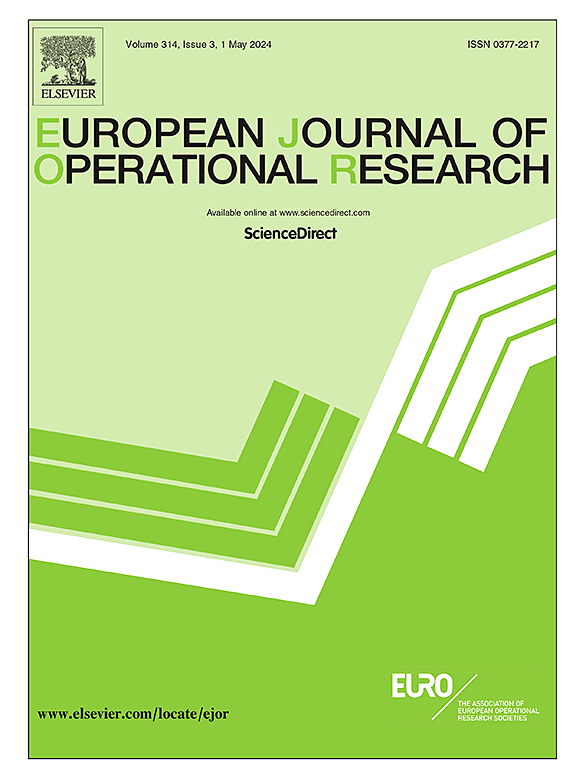Speeding up Grover’s algorithm
IF 6
2区 管理学
Q1 OPERATIONS RESEARCH & MANAGEMENT SCIENCE
引用次数: 0
Abstract
To find one of the加快格罗弗算法
为了在一个有N个条目的非结构化数据库中找到M个目标条目中的一个,Grover算法执行π4NM迭代。在每次迭代中,调用一个函数来评估一个条目是否为目标条目。与需要NM计算的经典过程相比,Grover算法实现了二次加速。这种二次加速,加上它作为搜索算法的普遍适用性,使Grover算法成为当今最重要的(量子)算法之一。一项改善其运行时间的研究是非常合理的。为此,我们研究了两种加速策略:(1)减少每次运行Grover算法时执行的迭代次数;(2)对数据库进行分区。对于每一种策略,我们不仅并行执行Grover算法,而且还探索了在单个量子处理单元(QPU)以及多个QPU上串行执行Grover算法的可能性。对于每种执行模式(串行、并行和串行/并行)和加速策略的组合,我们展示了如何使用封闭形式表达式和梯度下降过程获得最优策略。与Grover算法的教科书实现相比,对于单个QPU,我们获得了1.1382的加速因子。如果有多个qpu可供我们使用,我们得到的加速因子最多为1.1382Q,其中Q表示qpu的数量。此外,我们还展示了最小化Grover迭代的预期次数的主导策略也最小化了每个量子位执行的预期迭代次数。
本文章由计算机程序翻译,如有差异,请以英文原文为准。
求助全文
约1分钟内获得全文
求助全文
来源期刊

European Journal of Operational Research
管理科学-运筹学与管理科学
CiteScore
11.90
自引率
9.40%
发文量
786
审稿时长
8.2 months
期刊介绍:
The European Journal of Operational Research (EJOR) publishes high quality, original papers that contribute to the methodology of operational research (OR) and to the practice of decision making.
 求助内容:
求助内容: 应助结果提醒方式:
应助结果提醒方式:


